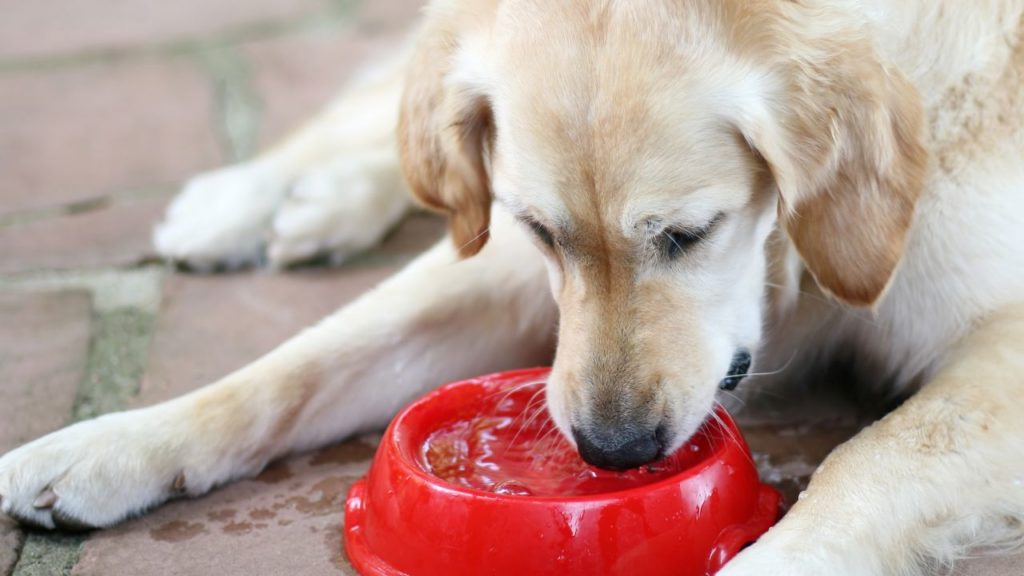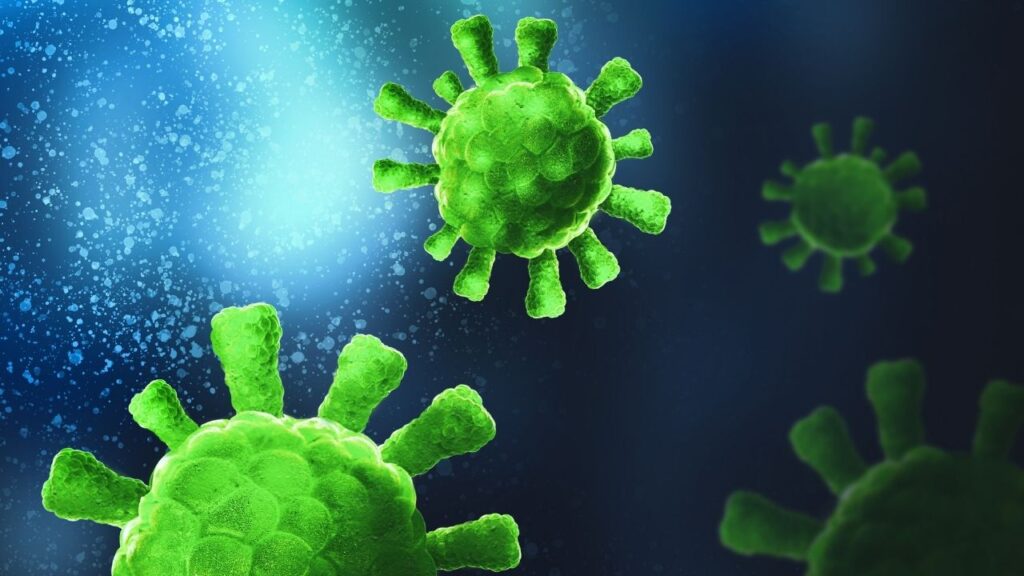Traditional lawn chemicals, herbicides and pesticides are common in our outdoor spaces, and in the care of our dogs. Weed killer, topical flea medications, and insect sprays are everywhere on store shelves. Unfortunately, many of these products contain chemicals that can be harmful for us and our dogs. These chemicals have even been linked to cancer development.
Key Takeaways
- Chemicals such as glyphosate, also known as Round-Up, and 2,4-dichlorophenoxyacetic acid (2,4-D) are often sprayed on lawns but are potentially harmful to both us and our dogs.
- A pesticide is a chemical used to kill or control “pests”, such as fleas and ticks. An herbicide is a chemical that is applied to greenery to remove or control unwanted plants, like weeds.
- Lawn herbicides are not safe and can have dangerous effects on the body. These effects can be magnified depending on frequency and length of exposure.
- Lawn pesticides contain chemicals that can have harmful chemicals on the body.
- Most pesticides will instruct users to stay off their lawns for at least six to 24 hours after application. It’s likely best to wait longer than that and wait for at least 48 hours.
- Paraquat is commonly cited as the most toxic herbicide that can only be used by commercially licensed users in the United States.
Herbicides and Pesticides Affect Us and Our Dogs
Our companion animals are important members of the family who share our living space. Dogs and humans develop similar cancers after exposure to environmental pollutants in lawn chemicals such as herbicides and pesticides.
The Role of Pesticides and Herbicides in Daily Life
Our lives and the lives of our dogs are deeply intertwined. We often share the same lived experiences. We are also exposed to similar environmental pollutants, including herbicides and pesticides.1
Pesticides 101
Pesticides are a group of chemicals that are applied to surfaces with the goal of eradicating species that we consider “pests”.
These may include:2
- Flies
- Spiders
- Mites
- Rats
- Some plant species
We even use pesticides on our dogs. There are insecticides in shampoos, dips, and collars to rid them of ticks and mosquitos.2
Unfortunately, these may contain organophosphates, pyrethrins, and carbamates. These molecules have been extensively linked to many health problems, including cancer.3
Herbicides 101
Herbicides are chemicals that are applied to control undesirable or unwanted plants from growing.2
These can have chemicals that are potentially harmful:4,5
- glyphosate, also known as Round-Up
- 2,4-dichlorophenoxyacetic acid (2,4-D), which is also one of the ingredients used to make Agent Orange, the powerful herbicide used by the U.S. Military during the Vietnam War
Our dogs are exposed to these chemicals on neighborhood lawns, golf courses, and on athletic fields.
Its common application means these chemicals also end up in our waterways, on the ground, and in the manufacturing of dog food.
How These Chemicals Impact the Body
Exposure to lawn chemicals like herbicides and pesticides can be potentially harmful to humans and canine companions alike. They have been linked to cancer because of the chemicals they contain. These chemicals can negatively impact the body.
- Organophosphates are commonly used in pesticide products. They are potentially toxic to mammals and can cause tremors or physical convulsions via the disruption of neurotransmitter activity in the brain.3
- Pyrethrins head straight to the central nervous system of the body and can cause hyperactive movement as well as paralysis.3
- Carbamates also cause the central nervous system to deregulate, which can result in rapid muscle spasms and convulsions.3
The Connection to Canine Cancer
The dangers of pesticides and herbicides have long been known. Research has addressed how they may cause cancer, including in dogs.
Results are mixed. There are many risk factors that impact whether or not these chemicals cause cancer in dogs, including route and duration of exposure, immune system status, and breed.
The two most common types of cancers associated with herbicide and pesticide exposure in dogs are transitional cell carcinoma and lymphoma.
Transitional Cell Carcinoma
Transitional cell carcinoma is a type of bladder cancer that affects the lining of the urinary tract and bladder.
The risk for developing transitional cell carcinoma is higher with exposure to herbicides than insecticides.6 Research that compared 83 Scottish Terriers with transitional cell carcinoma to 83 Scottish Terriers without transitional cell carcinoma found that dogs who were only exposed to insecticides as part of their owner’s lawn care regimen were less likely to be diagnosed with transitional cell carcinoma than if herbicide was used.6
In a similar study that compared 87 Scottish Terriers with transitional cell carcinoma and 83 Scottish Terriers, those that were treated with topical flea and tick products containing insecticides with fipronil or imidacloprid were more likely to develop transitional cell carcinoma than Scottish Terriers who had never been exposed to any anti-flea or tick products.7
Another study that investigated the role of insecticides in the development of transitional cell carcinoma in 59 dogs compared to 71 dogs with other chronic diseases or types of cancer found that risk for transitional cell carcinoma significantly increased with the use of insecticides.8 In addition, researchers found that risk was compounded by frequency of application. The risk of transitional cell carcinoma developing was 3.5 times greater for dogs treated two times per year versus only one to two times a year.8
Canine Malignant Lymphoma
The role of insecticides or pesticides and risk of lymphoma is less well known, so results should be interpreted with caution.
Many dog lovers worry that their flea and tick medicine may be causing cancer in their dogs. This has been studied, and it’s relieving to know that most studies have not been able to establish the connection between the insecticides used in flea and tick medicine and risk for lymphoma in dogs, regardless of whether medications were topical or oral.7,9
However, lymphoma does have a strong correlation with the use of certain lawn care chemicals.9 Let’s look at a study that compared owner responses to a questionnaire that included 491 cases of dogs with lymphoma, 479 cases of dogs with other types of tumors, and 466 otherwise healthy dogs. Here’s what they found.
- Owners who applied 2,4-D herbicides to their lawns were more likely to have dogs with lymphoma.9
- This risk increased with the number of applications, resulting in a two-fold increase of risk when applied four or more times per year.9
Lawn Chemicals, Herbicides, and Pesticides: How Much Is Too Much?
Lawn chemicals like herbicides and pesticides pose a risk to humans and dogs alike. How much is too much is based on several key factors.9
- The amount of pesticides and herbicides that your dog is exposed to as well as the frequency appears to play a large role.6,8 Dogs who spend a large amount of time outside on treated lawns may be more susceptible than others.
- Breed may play a role based on genetics alone. It’s not well-known what breeds may be sensitive to pesticides and insecticides, but most of this line of research has been done with Scottish Terriers,6,7 which indicates that they could be more at risk than others.
- Dogs that are overweight or obese may be more at risk than those at a healthier weight. In a study on the exposure to topical insecticides and risk of transitional cell carcinoma, dogs that were overweight or obese were disproportionately represented in the reported cases of transitional cell carcinoma studied.8
Dogs Can be a Model for Gauging Human Risk
Cancer in dogs and cancer in humans is highly congruent. Overlapping similarities make dogs a good proxy for the study of cancer in humans.
For example, dog lymphoma is similar in function and appearance to non-Hodgkin’s lymphoma in humans.9 The risks and outcomes concerning herbicides and pesticides in dogs are likely reflective of risks in humans as well.
How to Reduce Risk from Lawn Chemicals, Herbicides and Pesticides
The key to reducing risk is to reduce the number of opportunities that your dog has for exposure to herbicides and pesticides. You can accomplish this in several ways.
- Eliminate the use of lawn care chemicals in your own yard completely.9 If you must treat your lawn, reduce the amount of time that your dog spends outside after the initial application of any chemicals.6
- Call your local parks and recreation department and ask for a list of chemicals they use, as well as a schedule of treatment applications. This puts you in control of avoiding the area. You can also limit the time your dog spends there.
- Use natural herbicide-free alternatives, such as Foam Stream and BurnOut Weed & Grass Killer.11,12
- Control weeds in other organic ways, such as through the spreading of a thin layer of compost over areas you’re trying to limit growth.11,12
- Give your dog gentle baths on a regular schedule.
- Use a cleansing wipe to wipe down your dog after outdoor activities.
- Feed your dog a diet with unprocessed or low-processed foods. Dog food that is more processed, like dry kibble, is more likely to have the environmental residues of dangerous chemicals. Foods that are not from organic sources are not required to meet standards aimed at reducing exposure to chemicals in produce, like glyphosate.
- Supplement your dog’s diet with charcoal, bentonite clay, humic acid and fulvic acid if you know they have recently eaten foods with high chemical levels.
- Minimize the use of traditional chemical-packed topical agents. There are many non-toxic alternatives that can be used, like cedar and peppermint oil.
Topics
Did You Find This Helpful? Share It with Your Pack!
Use the buttons to share what you learned on social media, download a PDF, print this out, or email it to your veterinarian.









